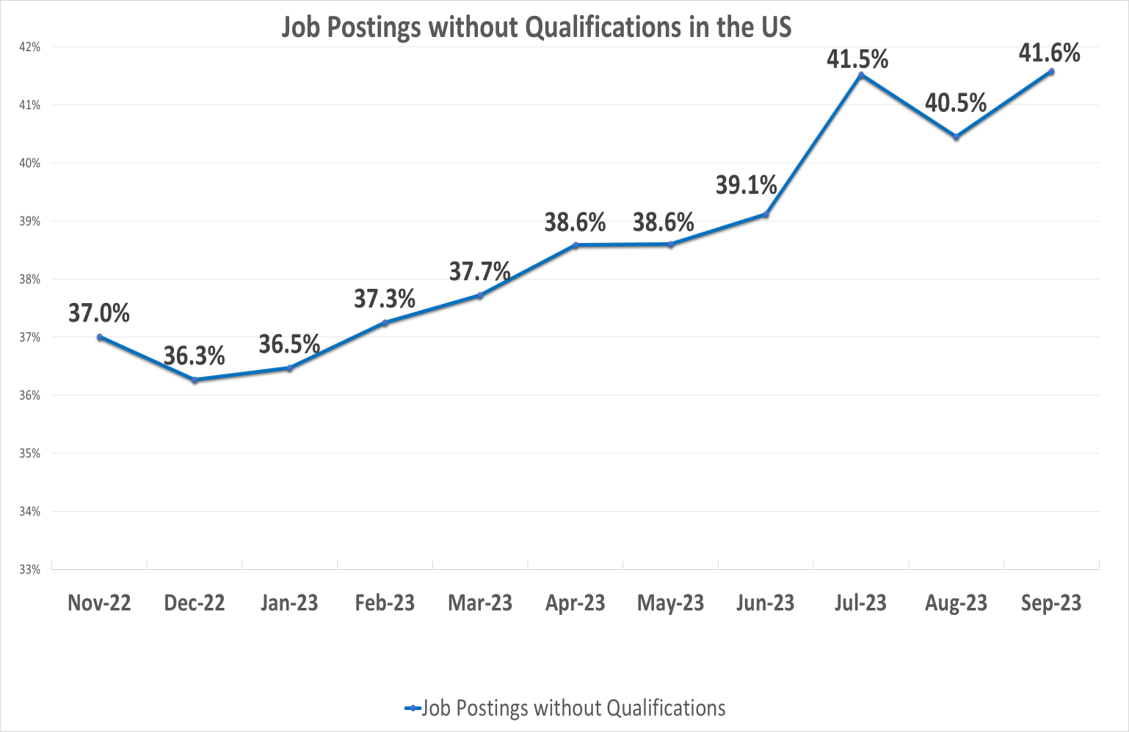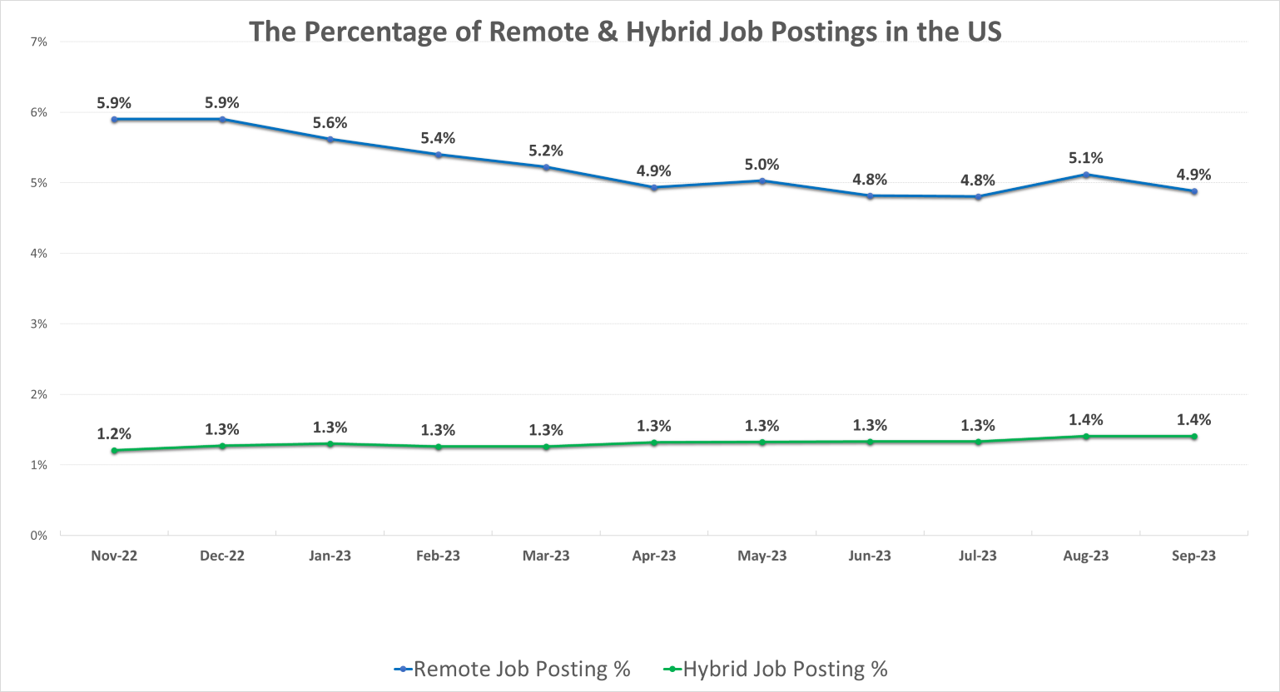What talent acquisition trends will dominate 2024?
November 13, 2023It’s been another busy year for talent acquisition leaders but what does 2024 have in store? Will AI continue to dominate? Will we see more organizations adopting skills-based hiring strategies and will there be more uncertainty? Spoiler alert, the answer is a resounding yes.
We’ve outlined the top seven talent acquisition trends for 2024 (in no particular order) in this latest blog post.
#1: Navigating uncertainty
Uncharted waters: Navigating uncertainty (again!)
Navigating uncertainty is going to be somewhat of a certainty in 2024. Yes, we know you were hoping to leave uncertainty behind (we were too), but as we get ever closer to the new year, it’s clear that uncertainty will be a key theme, again.
Unfortunately, the economic fluctuations and escalating conflicts that were prevalent in 2023 show no sign of abating. The Russia-Ukraine war is still causing huge apprehension across the world, as is the Israel-Hamas war. Continued geopolitical tensions, high interest rates and inflation could trigger a global recession early next year. The uncertainty surrounding the economic outlook is weighing heavily on business leaders and talent acquisition leaders alike. One of the biggest fears among talent leaders is being left behind when the economy does lift. CFOs don’t want to spend money (do they ever?), but one thing remains certain - the right talent fuels business growth. Without it, businesses can’t succeed, but the uncertainty about what’s next is making it harder than ever for talent acquisition leaders to plan.
And there’s a possibility the Great Resignation 2.0 could be on the cards (if this occurs, it will likely be the latter half of 2024). While voluntary separations are at an all-time low, so, too, is worker satisfaction.
There’s way too much uncertainty to predict what exactly will happen in 2024, but the Great Resignation 2.0 is a possibility that we can’t rule out. Navigating an uncertain future is going to continue to be a key theme (and challenge) for all talent leaders and CHROs in 2024.
#2: Revolutionizing hiring with AI
The transformation continues.
AI is expected to contribute $15.7 trillion to the global economy in 2030, according to research from PwC. Take a moment to let that figure sink in — $15.7 trillion is more than the current output of both China and India combined and reinforces the true impact AI is going to have over the next few years.
We’ve only scratched the surface when it comes to the capabilities of AI, quite literally. Although talent teams have long been using it to draft job descriptions, email replies and answer questions from candidates in real-time with chatbots, it can do way, way more than that. (We’d need another blog post to cover all the things AI can do in talent acquisition.) For example, it can analyze huge datasets in seconds — allowing talent leaders to make more strategic decisions about their workforces in minutes.
However, AI is not without its risks. For 2024, talent leaders must ensure their strategies are balanced and don’t underestimate the human element, while also ensuring AI usage adheres to regulation and upcoming legislation. In New York, for example, employers must show the AI they use is free of bias with annual bias audits. Employers must let candidates know if they’ve used AI in the hiring process, too.
Other states will likely introduce similar legislation next year, while the National AI Commission Act will be working on a comprehensive regulatory framework on AI in the US. The EU is due to introduce the AI Act soon too, and no doubt, the rest of the world will be looking to see what impact the regulation will have on talent teams in the EU. And then there’s artificial general intelligence, or AGI, and the impact that will have on talent acquisition - we’ll dive into that at another time though.
#3: Skills-based hiring
Recognizing the value of skills-centric hiring.
Skills-based hiring has risen in popularity over the past year, and we expect this to continue in 2024 and beyond.
The number of job postings in the US that didn’t mention qualifications such as academic degrees, certifications, or licensure has increased steadily over the past year, according to labor market intelligence from Claro. The percentage reached 41.6% in September 2023, up from 37% in November 2022. We expect this upward trend to rise further over the coming 12 months, as skills-based hiring can really help to plug skills gaps. This is, let’s face it, much needed given that skills shortages now affect most, if not all, industries.
Employers that focus more on skills and responsibilities rather than formal qualifications are already benefitting from a more diverse talent pipeline, the retention of existing staff members through internal mobility (and much more). The key to the success of skills-based hiring is ensuring the correct skills taxonomy sits within your talent framework for hiring.

Claro chart showing the total US job postings that don’t list qualifications between November 2022 and September 2023.
#4: Hybrid working
The best of both worlds.
Return-to-office mandates were commonplace in 2023, and we think this trend will continue into 2024. It’s worth noting that a large proportion of the companies that ordered employees back to the office did so on a hybrid basis, rather than a full-time basis. Companies get the best of both worlds with a hybrid working program, as they’re able to balance organizational success with the interests of their employees.
Data from Claro shows a slight decrease in the percentage of fully remote job postings in the US from November 2022 to September 2023. It peaked in November and December 2022, reaching 5.9% and reached a low of 4.8% in June and July 2023.
However, the consistent presence of remote job postings (around 5%) shows there’s a sustained demand for remote work opportunities. This aligns with research from FlexJobs which showed a staggering 97% of workers want some form of remote work. The survey revealed 65% of respondents reported wanting to work remotely full-time, while 32% wanted a hybrid work environment. Hybrid programs will continue to grow in popularity in 2024.

Claro chart showing the percentage of US remote and hybrid job postings between November 2022 and September 2023.
#5: Prioritizing learning and development (L&D)
Skills of today are not the skills for tomorrow.
Learning and development is not really a trend as such – it’s a necessity. As a talent leader, you’ll already be well-versed in the benefits of comprehensive L&D programs (improved employee performance and engagement, increased innovation, successful talent mobility and better retention levels to name a few), but as we head into another year of uncertainty (at least during the first half), it’s worth emphasizing the importance of close collaboration with your L&D team.
Strategic workforce planning data and the resulting skills forecasts are invaluable, but oftentimes, the info is not shared with learning and development teams. This is a huge miss as this data is needed to create L&D programs that are effective in developing the future skillsets organizations need. Some 89% of learning and development professionals agree that proactively building employee skillsets for today and tomorrow will help navigate the evolving future of work, according to LinkedIn’s 2023 Workplace Learning Report.
Robust L&D programs help to boost retention, especially among high performers. Using L&D to keep star performers engaged is also imperative when opportunities for career growth and promotion are limited. If they have the chance to develop their skillsets, they’ll be more likely to reward you with loyalty when economic uncertainty lifts as they’ll be able to move roles to progress rather than employers.
In September, the quit rate was 2.3% for the third consecutive month, according to the US Bureau of Labor Statistics.
#6: Evolving recruiter duties
The evolution of a recruiter’s role is going to be a huge trend next year and is something talent leaders must drive. Recruiters have long had to think like marketers to attract talent and be able to articulate an organization’s EVP effectively, but now with generative AI, they also need to think like editors. Drafting suitable prompts and being able to edit prompts effectively are key requirements of recruiters today. After all, with generative AI, you only get out what you put in. Recruiters also must become adept at reviewing, editing and tailoring any AI-generated content to ensure accuracy, personalization and alignment with company voice and values.
TA leaders must ensure AI training programs are fit for purpose. What does your program currently look like? Is it being updated regularly? We’ve already had several iterations of the most well-known large language models (GPT, BARD, LlaMA, Falcon and CLAUDE) and talent leaders must ensure training programs are revised regularly to keep up with the updates to platforms. (The same goes for regulation, although we mentioned that earlier, so won’t go into detail here.)
Let's not overlook the fact that talent acquisition is, and always will be a people business. Never has there been more demand for what's needed to be a trusted advisor to stakeholders and hiring managers. Being digitally adept and using data to inform hiring strategies is a necessity but isn’t enough for successful talent acquisition. Empathy, strong listening skills, emotional intelligence and building trust remain key skills for talent acquisition professionals.
#7: Talent intelligence
Data-driven talent strategies will become the norm.
Top talent leaders and CHROs have long understood the importance of talent intelligence. It has quickly become a staple in talent acquisition for leaders wanting a strategic advantage in this highly competitive and ever-evolving talent landscape. With another uncertain period approaching (for Q1 at the very least), talent intelligence will become even more of a top priority, especially for those organizations that haven’t quite realized the benefits yet. Many talent leaders are evolving their data interrogation skills too. Partnering with data scientists/analysts to ensure the tools available to provide intelligent data insights are being used to their full capability is key when using data to lead people decisions.
Talent mobility, for example, helps leaders to understand where they're winning and losing talent. These insights can help talent leaders and CHROs refine their strategies from both an attraction and retention standpoint. And if we do see the Great Resignation 2.0, an effective talent mobility strategy will be worth its weight in gold.
In summary, the rapidly evolving talent landscape presents both challenges and opportunities for talent leaders and CHROs. And despite the looming uncertainty, the ability to innovate will be the cornerstone of successful talent acquisition strategies in the year ahead.
About Craig Sweeney
As executive vice president, global strategic talent solutions, Craig leads WilsonHCG's growth strategy and new partnership cultivation across the globe. Alongside the trusted consultants at WilsonHCG, he builds market-leading, scalable and customisable RPO solutions. Craig's relationships span all industry verticals and geographies with expertise in technology, business services, financial services, engineering, manufacturing, retail, and media.



